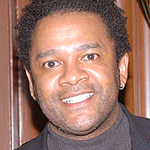N’Tanya Lee, the former executive director of Coleman Advocates for Children and Youth, said that poverty and the high cost of living in San Francisco are fueling the exodus.
“What’s significant is that people who make 'middle class' wages are poor in San Francisco,” she said. "No one can survive even moderately on the poverty rate anywhere, but especially not in San Francisco," she continued.
“As someone who has adopted San Francisco as my home, I’m upset," Lee said. "The tone of conversations about out-migration upset me because we aren’t upset enough. The state of black children in our education system is one of many, many, many indicators of how our city has failed our community." She explained that only 50% of African Americans graduate from high school and of those who do, only 20% have the credits that would allow them to attend a UC or State school.
“The bleakness is the rule, the good moments are the exceptions. And that’s the tragedy of the black experience in San Francisco,” lamented James Taylor, chair of the Politics Department at USF. “I’m not talking about that we haven’t had a Kamala Harris, but I’m talking about in terms of the quotidian, ordinary, pedestrian experience of ordinary black folk, it’s more like the Tenderloin than it is like City Hall.”
Taylor, who was asked to speak about the power of the black vote in San Francisco politics, was clearly upset. Issues important to African Americans have remained constant and unaddressed since the 1940s, he said. The decimation of the black community in the name of redevelopment in the late 1950s and early 1960s, Taylor said, largely hit the thriving Fillmore district, and Taylor believes that area still suffers at the hands of real estate priorities.
“When you treat a people as if they don’t exist, you have robbed them of the most important component of being part of the human family,” began Reverend Malcolm Bird, pastor of the historic AME Zion Church in the Western Addition, which was established in 1852 by slaves fleeing west. “By renaming the Western Addition NoPa, real estate investors, individuals in government and potential stakeholders robbed this community of its identity.”
As a new transplant to San Francisco three years ago, Bird was surprised to find San Francisco’s black community in such dire straights. His young congregants plan to go off to colleges across the country with no plans to return. The congregation of AME Zion has dwindled from 1,100 at its peak in 1903 to just 193 in 2011.
In summary, the panelists described a state of emergency among the city's African Americans. Black families with some resources are leaving and those who remain are floundering. The 2005 task force recommended a number of solutions, some of which include increasing affordable housing, expanding pre-school education, developing opportunities for African American businesses, and addressing public safety. In the middle of a mayoral race, the question asked on Wednesday was how to get the city to act on the 2009 report.
